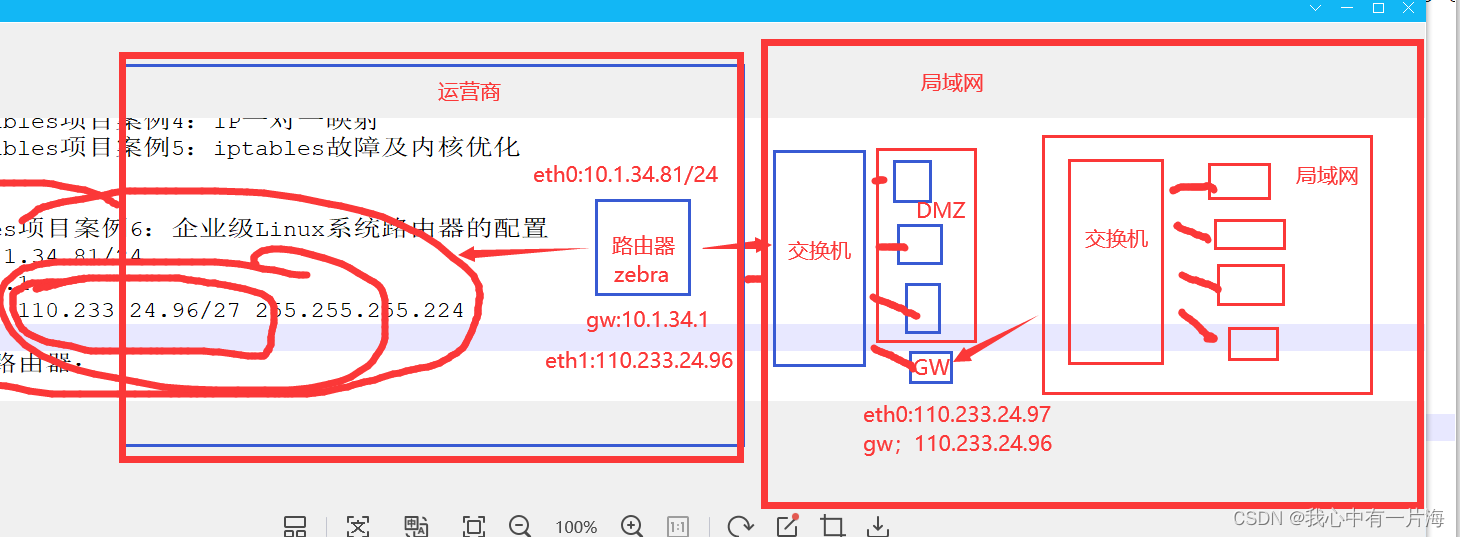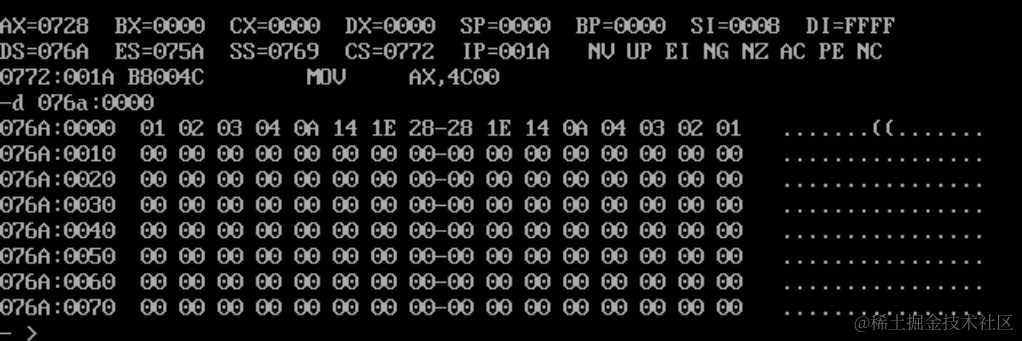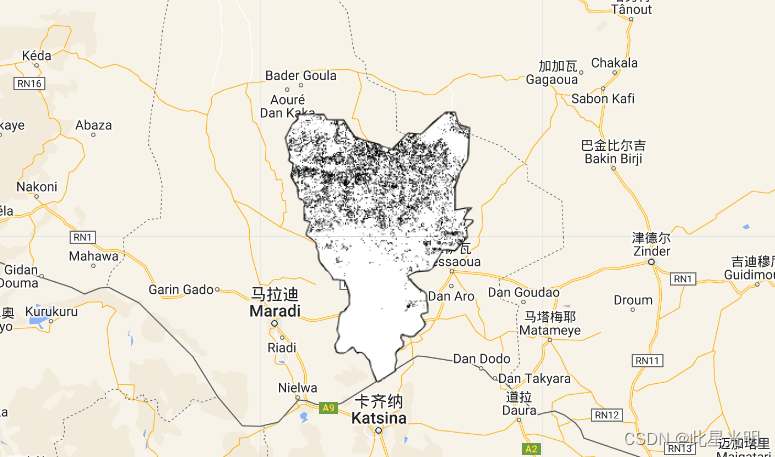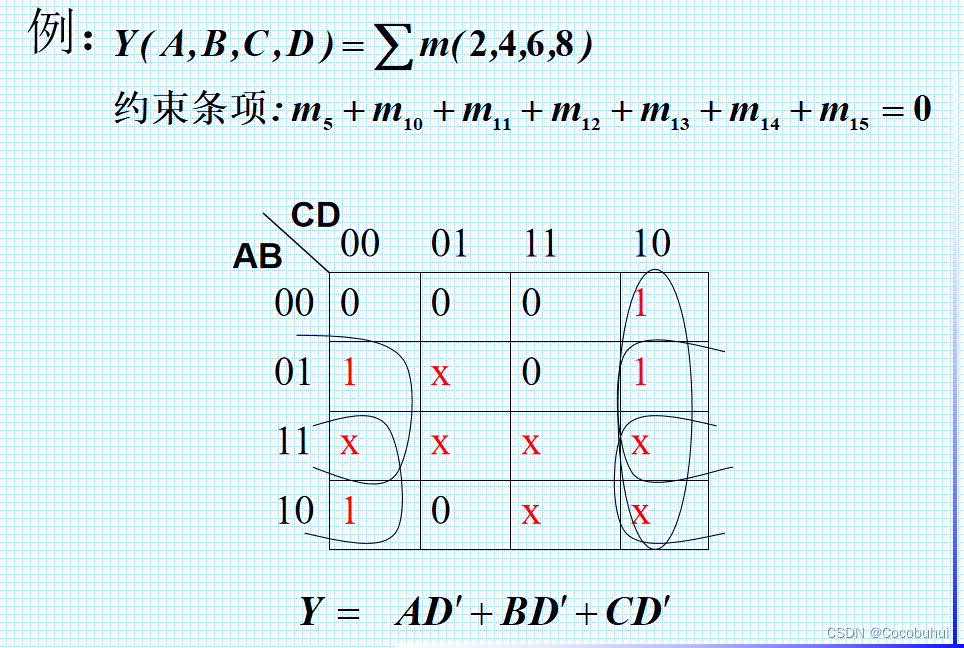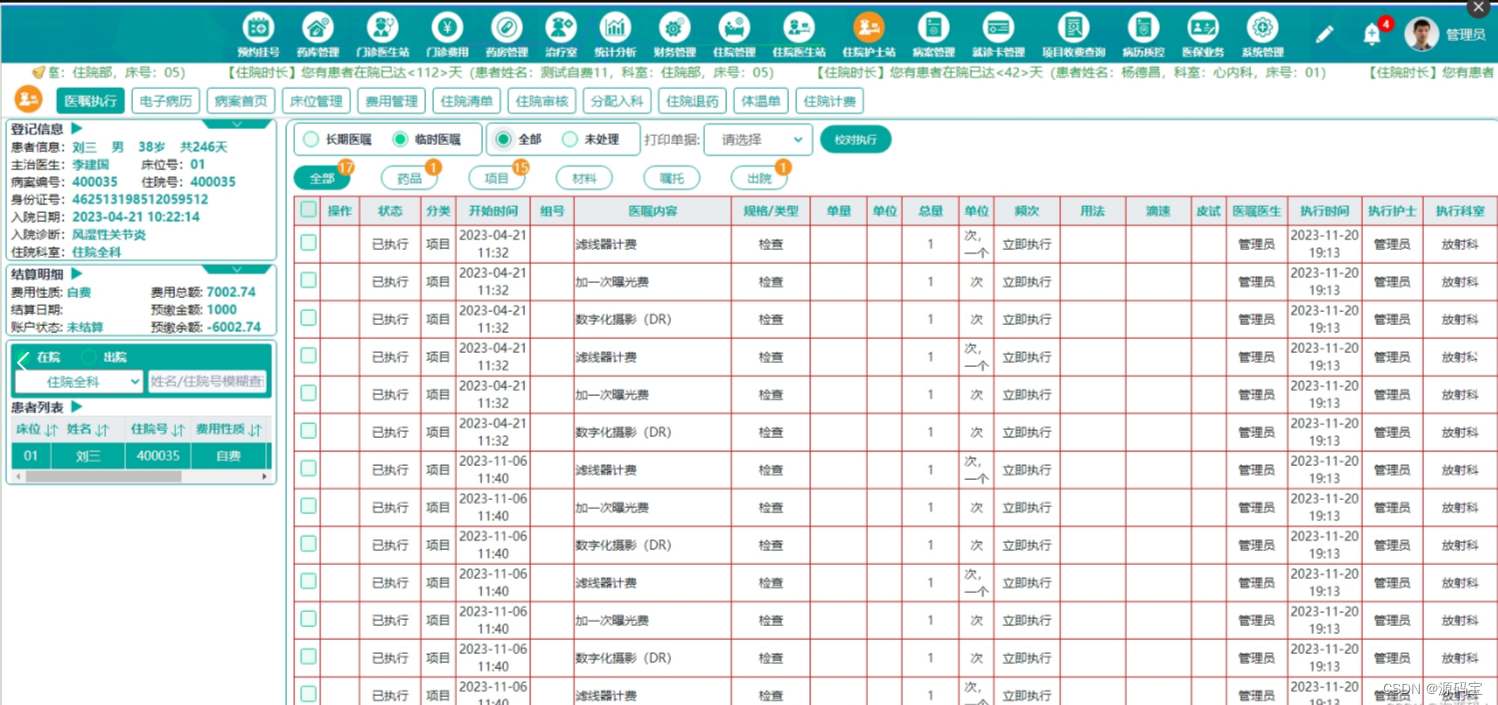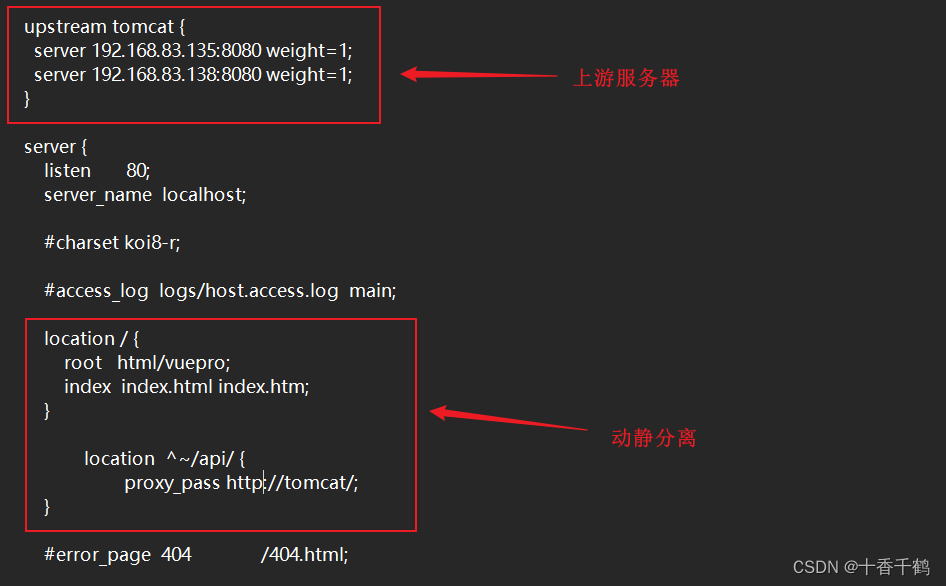当钉钉监测到发生一些事件,如下图

此处举例三个事件user_add_org、user_change_org、user_leave_org,传统的做法是,我们写三个if条件,类似下图
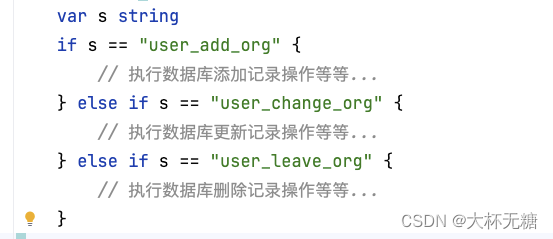
这样字符串匹配效率比较低,于是联想到gin框架中的路由匹配算法,可以借鉴模仿gin框架的实现方式。
用实际需求驱动开发,掌握知识的同时还能应用知识,理解得会更加深入。
gin框架源代码解析
gin框架根据路由字符串建树

无论是POST、还是GET底层都是下方代码
func (group *RouterGroup) POST(relativePath string, handlers ...HandlerFunc) IRoutes {
return group.handle(http.MethodPost, relativePath, handlers)
}
func (group *RouterGroup) handle(httpMethod, relativePath string, handlers HandlersChain) IRoutes {
absolutePath := group.calculateAbsolutePath(relativePath)
// 把这个新的handlefunc和之前的handlefunc(比如说中间件中的)加在一起
handlers = group.combineHandlers(handlers)
// 给这个POST请求去建树
group.engine.addRoute(httpMethod, absolutePath, handlers)
return group.returnObj()
}
func (engine *Engine) addRoute(method, path string, handlers HandlersChain) {
assert1(path[0] == '/', "path must begin with '/'")
assert1(method != "", "HTTP method can not be empty")
assert1(len(handlers) > 0, "there must be at least one handler")
debugPrintRoute(method, path, handlers)
# 取出POST方法的树
root := engine.trees.get(method)
if root == nil {
root = new(node)
root.fullPath = "/"
engine.trees = append(engine.trees, methodTree{method: method, root: root})
}
# 具体去建树
root.addRoute(path, handlers)
}树的节点结构如下:
type node struct {
path string
indices string
wildChild bool
nType nodeType
priority uint32
children []*node // child nodes, at most 1 :param style node at the end of the array
handlers HandlersChain // 此处就是对应路径要执行的HandleFunc
fullPath string
}
type HandlersChain []HandlerFunc
type HandlerFunc func(*Context)gin框架在请求到来时具体查树执行逻辑
func (engine *Engine) ServeHTTP(w http.ResponseWriter, req *http.Request) {
c := engine.pool.Get().(*Context) // 取出一个context对象
c.writermem.reset(w)
c.Request = req
c.reset()
// 关键处理函数
engine.handleHTTPRequest(c)
engine.pool.Put(c)
}
func (engine *Engine) handleHTTPRequest(c *Context) {
httpMethod := c.Request.Method
rPath := c.Request.URL.Path
unescape := false
if engine.UseRawPath && len(c.Request.URL.RawPath) > 0 {
rPath = c.Request.URL.RawPath
unescape = engine.UnescapePathValues
}
if engine.RemoveExtraSlash {
rPath = cleanPath(rPath)
}
// Find root of the tree for the given HTTP method
// 找到对应请求方法的前缀树
t := engine.trees
for i, tl := 0, len(t); i < tl; i++ {
if t[i].method != httpMethod {
continue
}
root := t[i].root
// Find route in tree
// 去前缀树中取值
value := root.getValue(rPath, c.params, c.skippedNodes, unescape)
if value.params != nil {
c.Params = *value.params
}
if value.handlers != nil {
// 找到所有的handlerfunc
c.handlers = value.handlers
c.fullPath = value.fullPath
// 具体去执行handlerfunc
c.Next()
c.writermem.WriteHeaderNow()
return
}
......
}
}
func (c *Context) Next() {
c.index++
for c.index < int8(len(c.handlers)) {
c.handlers[c.index](c) // 依次调用handlefunc,让c(context)在不同的func中传递
c.index++
}
}钉钉事件回调具体实现
方式一:修改gin框架源代码(不推荐修改源代码)
我们第一步是先来建树,并且绑定对应的方法

第二步的话,就是当有钉钉群聊修改了名称,钉钉会给我们发送请求,会执行以下代码

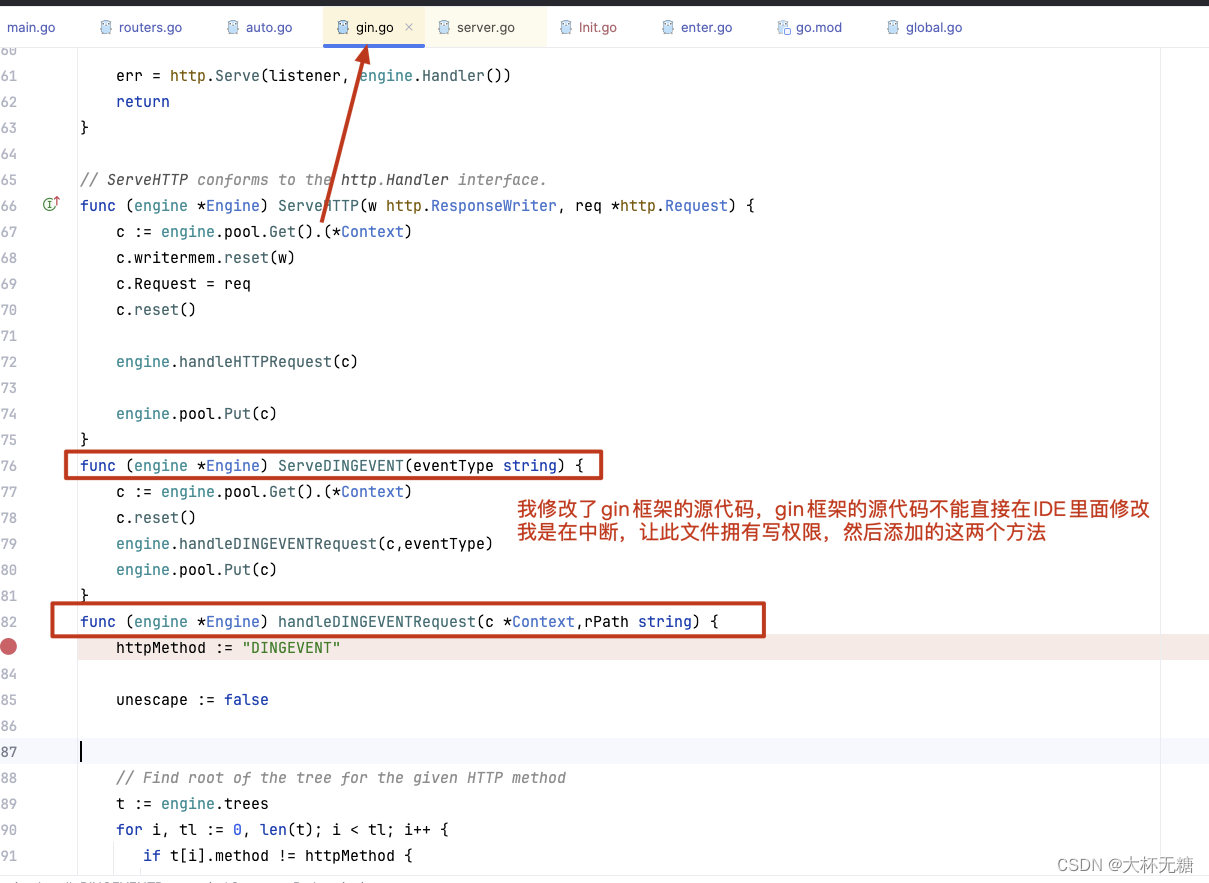
其中,ServeHTTP是当网络请求过来的时候,我们会执行的方法,下面我新添加的两个方法,是当钉钉事件发生的时候,就会执行,然后找到路由树中对应的方法,即可做出对应的逻辑处理。
问题:
由于在查找树的时候,修改了gin框架的源代码,所以我们提交代码到仓库里面,其他同事是无法使用的,所以我们需要尽量不修改gin的源代码,也就是说查树的时候,不要修改源代码。
方法二:不修改gin框架源代码
把钉钉的事件注册到gin框架的路由中,在收到钉钉的回调请求之后,再自己给自己发送一个请求,然后就可以了,推荐使用这种方法。
方法三:自己实现前缀树
我们也要给树中的节点上面挂上对应的func,就类似于gin框架中
具体实现后续更新,需要用到context,sync.pool....
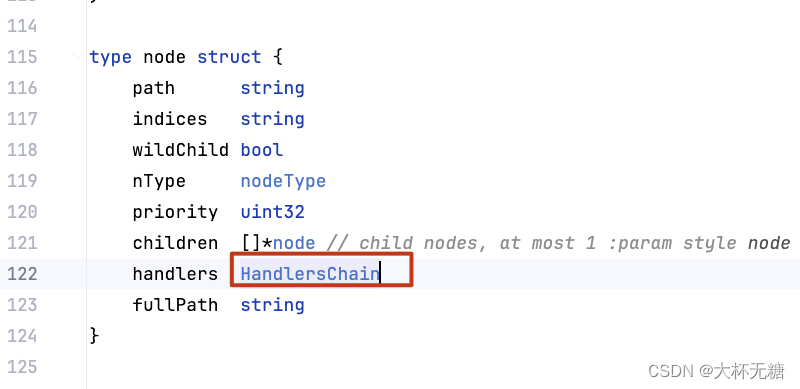

参考链接:
事件订阅总览 - 钉钉开放平台
基于 Golang 实现前缀树 Trie
gin框架源码解析 | 李文周的博客






